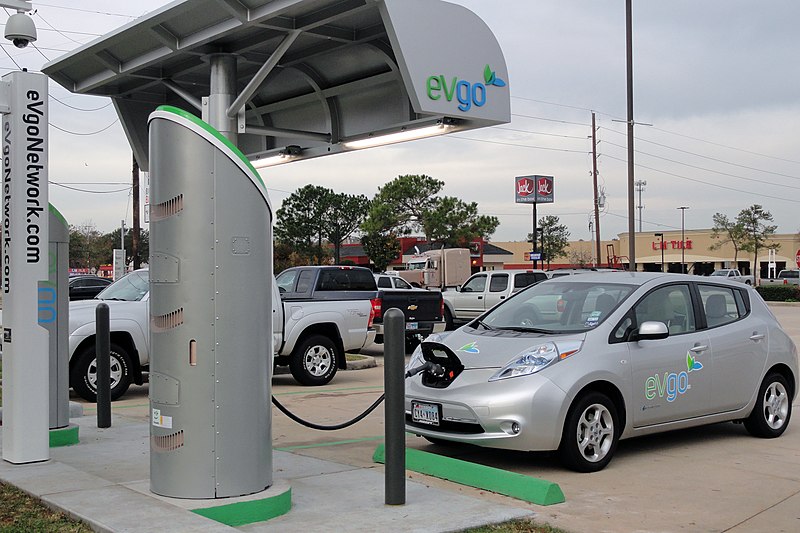Electric Vehicles (EVs): Shaping the Future of Transportation 2035 – The automotive industry is undergoing a profound transformation, with the rise of Electric Vehicles (EVs) emerging as a defining force in shaping the future of transportation. Electric vehicles, powered by batteries or fuel cells, represent a sustainable and innovative shift away from traditional internal combustion engines. In this article, we explore the various facets of EVs and their pivotal role in reshaping the landscape of transportation.
1. The Rise of Electric Vehicles: A Sustainable Revolution
The rise of electric vehicles is a response to the pressing need for sustainable transportation solutions. With a focus on reducing greenhouse gas emissions and combating climate change, electric vehicles have gained prominence as a cleaner alternative to traditional gasoline-powered cars. The electrification of transportation is a pivotal step toward achieving environmental sustainability.
2. Environmental Benefits: Reducing Carbon Footprint
One of the primary advantages of electric vehicles lies in their environmental impact. EVs produce zero tailpipe emissions, reducing air pollution and decreasing the overall carbon footprint associated with transportation. This shift aligns with global efforts to combat air quality issues and mitigate the effects of climate change.
3. Technological Advancements: The Evolution of Battery Technology
The advancement of battery technology is a key driver behind the widespread adoption of electric vehicles. Lithium-ion batteries, with their improved energy density and charging capabilities, have become the dominant power source for EVs. Ongoing research and development aim to enhance battery performance, reduce costs, and extend the driving range of electric vehicles.
4. Government Incentives: Encouraging EV Adoption
Governments around the world are implementing incentives to promote the adoption of electric vehicles. These incentives include tax credits, rebates, and subsidies that make EVs more affordable for consumers. The goal is to accelerate the transition to electric mobility and stimulate the growth of a sustainable transportation ecosystem.
5. Charging Infrastructure: Building a Robust Network
The expansion of charging infrastructure is crucial for the widespread acceptance of electric vehicles. Governments, private enterprises, and automotive manufacturers are investing in building a comprehensive network of charging stations. Fast-charging technologies aim to reduce charging times, addressing one of the perceived challenges of EV adoption.
6. Cost Savings: Lowering the Total Cost of Ownership
While the initial cost of electric vehicles may be higher than traditional vehicles, the total cost of ownership is often lower. EVs benefit from lower operating and maintenance costs, as electric motors are inherently simpler and require less maintenance than internal combustion engines. Additionally, the decreasing cost of batteries contributes to the overall affordability of electric vehicles.
7. Range Anxiety Mitigation: Extending Driving Ranges

Addressing range anxiety, or the fear of running out of battery power during a journey, is a focal point for electric vehicle manufacturers. Technological advancements aim to extend the driving range of EVs on a single charge, making electric vehicles suitable for a broader range of driving needs.
8. Diverse Models and Segments: Meeting Consumer Preferences
The electric vehicle market is diversifying with an increasing variety of models across different segments. From compact city cars to SUVs and luxury vehicles, manufacturers are catering to diverse consumer preferences. This diversification contributes to the mainstream adoption of electric vehicles.
9. Electric Public Transportation: Transforming Urban Mobility
Electric vehicles are not limited to personal cars; they are also reshaping public transportation. Electric buses, taxis, and shared mobility services contribute to reducing emissions in urban environments, offering a cleaner and more sustainable alternative to traditional public transportation.
10. Autonomous Electric Mobility: Convergence of Technologies
The convergence of electric mobility and autonomous driving technologies represents the next frontier in transportation. Autonomous electric vehicles have the potential to revolutionize mobility, offering efficient, safe, and convenient transportation solutions for a variety of applications, from ride-hailing services to last-mile delivery.
Conclusion: The Electrified Road Ahead
In conclusion, electric vehicles are at the forefront of a transformative shift in the automotive industry,* heralding a future where sustainable transportation is the norm. From environmental benefits to technological advancements, the rise of electric vehicles is not just a trend but a fundamental reimagining of how we move. As governments, industries, and consumers continue to embrace this electric revolution, the road ahead promises a cleaner, greener, and more sustainable future for transportation. Electric vehicles are not just shaping the future; they are driving us toward a new era of mobility.
Read More: Sustainable and Eco-Friendly Automotive Practices: Driving Towards a Greener Future









4 thoughts on “Electric Vehicles (EVs): Shaping the Future of Transportation 2035”
Comments are closed.